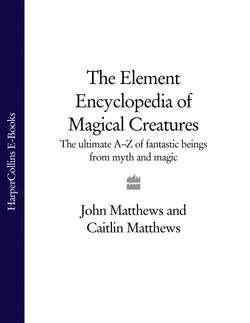Читать книгу The Element Encyclopedia of Magical Creatures: The Ultimate A–Z of Fantastic Beings from Myth and Magic - John Matthews - Страница 150
ASPIDOCHELONE
ОглавлениеA gigantic sea turtle frequently cited in sailors’ yarns from earliest times. In classical Greece it was known as Aspidochelon or Aspidodelone or as the Asp Turtle, though the Physiologus refers to it as the as Fastitocalon. This dates it to at least as early as the 2nd century BC, in Alexandria, where the Physiologus was compiled. Medieval bestaries named it as Aspidoicholon or Apsodo-Toroise, while Middle Eastern sources, probably deriving from Alexandrian writings, knew it as Zaratan. It was said to be so vast that it resembled an island floating in the sea. Mud and soil accumulated on its back and bushes and shrubs grew there, giving it the appearance of a floating island. There are numerous sailors’ tales which described ships anchoring off what they thought was an island, going ashore for the night and lighting a fire. Only at this point did the creature awaken, and sink beneath the water, carrying the unfortunate mariners with it. One of the earliest accounts is in the medieval Voyage of St Brendan, when the saint and his companions encounter the great beast and come very close to being destroyed by it – only escaping because of the holiness of their leader. In this source, it is known as Jasconius. Medieval Christian writers associated it with evil, and described its great open mouth – which it used as a kind of trawl-net as it moved through the ocean – as a gateway to hell. Yet the Aspidochelone seems to have lived exclusively on a diet of fish, which swam into its open jaws, attracted by the surprisingly sweet smell that issued from it. J.R.R. Tolkien has a poem about the Fastitocalon, based on the medieval accounts of the Aspidochlone, in his collection The Adventures of Tom Bombadil.
